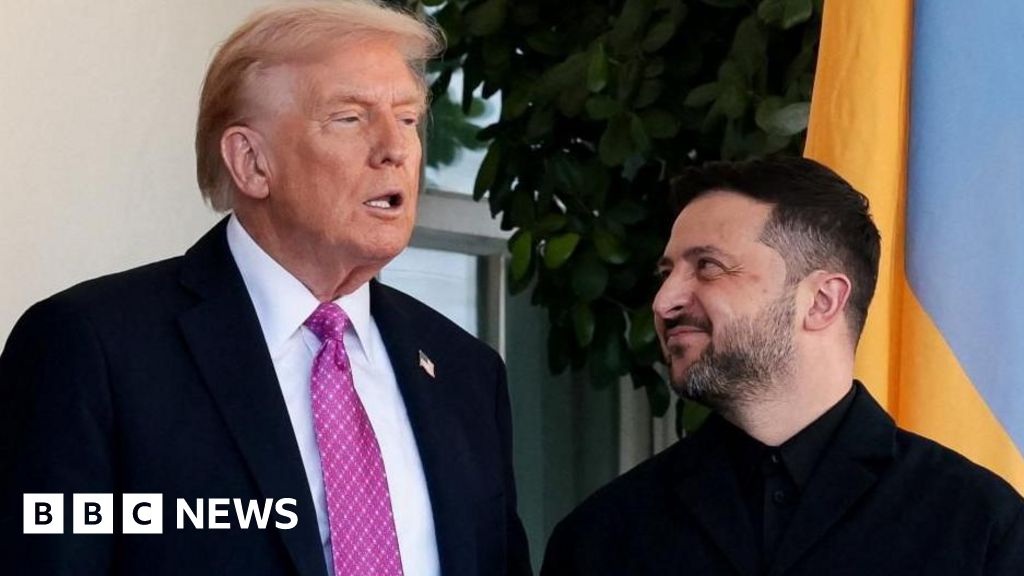US-Ukraine Peace Plan Gains Momentum: Trump Envoy Heads to Moscow as Kyiv Seeks Final Deal Amidst European Skepticism
 Ukraine
International Relations
Ukraine
International Relations

Ukraine and US reach common understanding on a peace plan. Trump's envoy heads to Moscow, Army Secretary to Kyiv. Key disputes remain; Europe expresses skeptici
US and Ukraine Advance on Peace Plan Amidst Diplomatic Push
In a significant diplomatic development, Ukraine has confirmed a "common understanding" with the United States regarding a proposed peace deal aimed at resolving the protracted conflict with Russia. This breakthrough follows intensive weekend discussions in Geneva between American and Ukrainian officials, fine-tuning a 28-point plan initially presented to Kyiv last week.
US President Donald Trump announced on social media that the original plan has been updated with input from both sides. He has instructed his Special Envoy, Steve Witkoff, to meet with Russian President Vladimir Putin in Moscow. Simultaneously, Secretary of the Army Dan Driscoll is slated to engage with Ukrainian representatives, with President Zelensky's chief of staff anticipating Driscoll's visit to Kyiv this week.
Russia's Reservations and European Doubts
Despite the apparent progress, Russia has expressed strong reservations. The Kremlin stated it had not been consulted on the revised draft, warning that substantial changes to the initial framework might be unacceptable. Russian Foreign Minister Sergei Lavrov noted that while Moscow favored the initial US framework, the situation would be "fundamentally different" if significant alterations were made. As of Tuesday morning, Russia had not received a copy of the new plan, with Lavrov accusing Europe of hindering US peace initiatives.
American officials have not publicly addressed Russia's concerns, though US Army Secretary Dan Driscoll did hold meetings with Russian representatives in Abu Dhabi. Crucially, several core disagreements between Russia and Ukraine reportedly remain unresolved, including vital security guarantees for Kyiv and the contentious issue of territorial control in eastern Ukraine, particularly the Donbas region (Donetsk and Luhansk), Crimea, Kherson, and Zaporizhzhia.
Zelensky's Stance and Trump's Conditions
Ukrainian President Volodymyr Zelensky, keen to discuss "sensitive points," expressed readiness to meet President Trump before month-end, emphasizing the critical role of American strength in influencing Russia. He confirmed that the initial 28-point plan had been streamlined, with some provisions removed.
President Trump, while not commenting directly on the prospect of bilateral talks with Zelensky, indicated on social media that he looked forward to meeting both Zelensky and Putin "soon, but ONLY when the deal to end this War is FINAL or, in its final stages." He clarified that the original version of the plan was merely a "concept" or "map," not a definitive strategy.
Skepticism also pervades European capitals. French President Emmanuel Macron observed "no Russian will for a ceasefire," while Downing Street cautioned that a "long way to go – a tough road ahead" remains for peace after nearly four years of conflict.
Allies Convene as Fighting Persists
On Tuesday, Macron and UK Prime Minister Sir Keir Starmer co-chaired a meeting of the "coalition of the willing," a group of Ukraine's European and international allies committed to continued defense support. During this call, which included US Secretary of State Marco Rubio, leaders agreed to establish a joint US task force to accelerate efforts on security guarantees for Ukraine.
The issue of security guarantees is just one facet of the profound disagreements. Zelensky reiterated that Putin's demand for legal recognition of seized Ukrainian territories represents the "main problem" obstructing peace. Russia consistently demands Ukraine's full withdrawal from the entire eastern Donbas, along with its continued control over Crimea, annexed in 2014, and large parts of Kherson and Zaporizhzhia.
A flurry of diplomatic activity followed the leakage of the US-backed plan. Earlier versions reportedly included provisions for Ukraine to cede controlled areas, forgo NATO membership, and significantly reduce its armed forces—elements that seemed to align with key Kremlin demands. While Putin initially suggested the draft could form a "basis" for a deal, Zelensky countered that Ukraine faced a choice between its US partnership and its "dignity." European leaders also pushed back on several aspects of the original draft.
A controversy also emerged after some senators claimed Secretary Rubio had suggested the plan was effectively a Russian draft, not US-authored, prompting Rubio to publicly insist on its American origin. Both the US and Ukraine have since praised the draft's evolution, with Zelensky calling it "the right approach" following amendments.
Meanwhile, the conflict continues on the ground. Both Russia and Ukraine reported strikes in Zaporizhzhia on Tuesday night. Ukrainian officials reported at least seven injuries, while the Kremlin-installed governor claimed Ukrainian strikes on energy grids left up to 40,000 people without power. The war, which began with Russia's full-scale invasion in February 2022, has resulted in tens of thousands of casualties and millions displaced.